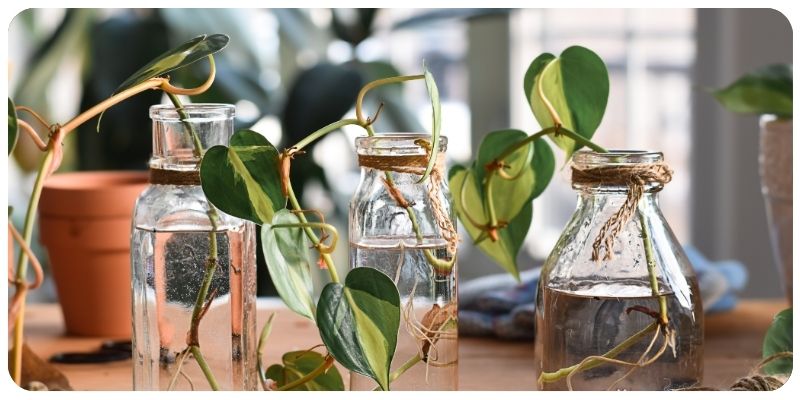
How to Propagate Plants Using Cuttings
Plant propagation through cuttings is one of the easiest and most effective ways to multiply your favorite plants. Whether you want to expand your plant collection or share cuttings with friends, this method allows you to grow new plants from the stems, leaves, or roots of existing plants. In this guide, we'll walk you through the process of propagating plants using cuttings step by step.
1. Why Propagate Plants with Cuttings?
Propagation by cuttings offers several benefits. Not only is it a cost-effective way to expand your garden, but it also allows you to grow plants that are genetically identical to the parent plant. Here are some reasons why propagating with cuttings is so popular:
- Cost-effective: Propagating plants from cuttings eliminates the need to buy new plants, saving you money while expanding your collection.
- Genetic consistency: Plants grown from cuttings are clones of the parent plant, ensuring they have the same characteristics, such as growth patterns and bloom colors.
- Faster growth: Cuttings usually root and grow faster than seeds, allowing you to see results sooner.
2. Best Plants to Propagate from Cuttings
Not all plants can be easily propagated through cuttings, but many common houseplants and garden favorites can be successfully grown this way. Here are some plants that are particularly well-suited for propagation by cuttings:
Plants that Thrive from Cuttings
- Pothos: A popular houseplant, pothos is easy to propagate from stem cuttings and can quickly grow into new plants.
- Succulents: Many succulents, including jade plants and echeveria, can be propagated from leaf cuttings or stem cuttings.
- Philodendron: Similar to pothos, philodendrons root easily in water or soil when propagated from stem cuttings.
- Rosemary: A woody herb, rosemary can be propagated from stem cuttings and will grow into a new plant within a few weeks.
- Mint: Mint grows rapidly and can be easily propagated by placing stem cuttings in water or soil.
3. How to Propagate Plants Using Stem Cuttings
Stem cuttings are one of the most common methods of propagation. Here's how to propagate a plant using a stem cutting:
Step-by-Step Guide to Stem Cuttings
- Step 1: Select a healthy parent plant. Look for a stem with healthy leaves and no signs of disease.
- Step 2: Using clean, sharp scissors or pruning shears, cut a 4-6 inch section of the stem just below a leaf node. Remove the leaves from the lower half of the cutting.
- Step 3: Place the cutting in a jar of water or in a pot filled with moist soil. If using water, ensure the node (where the leaves were removed) is submerged.
- Step 4: Place the jar or pot in a bright location with indirect sunlight. Keep the water fresh by changing it every few days, or keep the soil moist but not soggy.
- Step 5: Roots should start to form within 2-4 weeks. Once the roots are at least 1-2 inches long, you can transplant the cutting into a pot with soil if it was started in water.
4. Propagating Plants Using Leaf Cuttings
Some plants, like succulents and certain houseplants, can be propagated from a single leaf. Here's how to propagate plants using leaf cuttings:
Step-by-Step Guide to Leaf Cuttings
- Step 1: Gently remove a healthy leaf from the parent plant. For succulents, ensure the entire leaf is removed, including the base.
- Step 2: Allow the leaf to air dry for 1-2 days. This helps prevent rot when the leaf is placed in soil.
- Step 3: Place the dried leaf on top of well-draining soil, such as a cactus or succulent mix. Do not bury the leaf in the soil.
- Step 4: Mist the soil lightly every few days to keep it slightly moist. Within a few weeks, tiny roots and new plantlets should start to form.
- Step 5: Once the plantlets have grown, they can be transplanted into their own pots.
5. Tips for Successful Propagation
To increase your chances of success when propagating plants using cuttings, keep these tips in mind:
Top Tips for Plant Propagation
- Use healthy parent plants: Always take cuttings from plants that are free of pests and disease.
- Keep the environment humid: Covering your cuttings with a clear plastic bag or placing them in a humidity dome can help maintain moisture and encourage root development.
- Be patient: Rooting can take several weeks, so be patient and keep the environment stable for the best results.
- Monitor light: Provide bright, indirect light for your cuttings. Avoid direct sunlight, which can cause them to dry out.
Conclusion
Propagating plants using cuttings is a fun and rewarding way to grow new plants from your existing collection. By following the right steps and selecting the right plants, you can create a thriving garden of new plants in no time. Whether you’re a beginner or a seasoned gardener, this propagation method is a great way to expand your greenery while saving money.